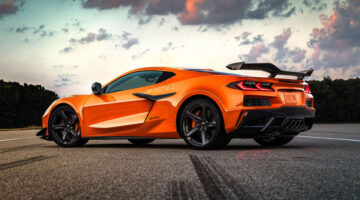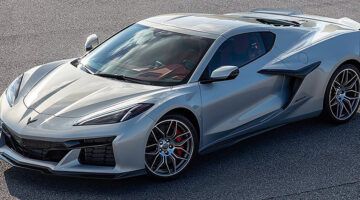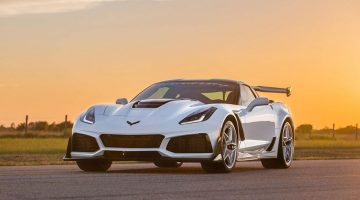Perhaps the key aesthetics though are the grooves across the bonnet, a nod to the 3.6-litre V6 underneath. Producing 305hp and 263lb ft of torque, the 3564cc unit is capable of punching the Impala from 0-100kph in 6.8 seconds, putting it well into Ford Focus ST and VW Golf GTI bating territory. So hardly shabby then. A shame then that this isn’t very noticeable under heavy acceleration. Optimum torque comes in at 5300rpm, while the 305 horses only neigh in unison at the 6800rpm mark, a stone’s throw from the redline where you’re unlikely to reap the benefits for long. Consequently response off the line is a little lethargic, acceleration proving steady if nothing else: you wouldn’t believe for instance that this V6 is the ‘most powerful naturally aspirated engine in the segment’. Saying that, once up to speed the Impala is remarkably refined for highway cruising. Throw a glance at the speedometer and you may be surprised just how fast you’re going, such is the comfort of the power adjustable seats, ride comfort of the MacPherson suspension and benefits of the acoustically laminated windscreen.
It’s when we kick on that issues start to arise. Throw the Impala into a corner at pace and you’ll find most of the 1723kg kerb weight slosh to one side, despite the Impala boasting a much stiffer chassis than its predecessor. The 20-inch blackwalls do their best to hold on but bodyroll and a high centre of gravity mean the front-wheel drive saloon will wash wide. Steering is a little light but does offer just enough response to keep you connected with the front wheels, something Chevrolet’s Pull Drive Compensation (which automatically adjusts steering weight to accommodate high crosswinds) also contributes to. Response through the brakes can be a little soft too: slam them on and the weighty Impala will come to a halt quite quickly, but finding the grey – sorry, Dark Titanium – area in between is a little tricky.
Gearchanges through the six-speed transmission are smooth (once again the onus is on a comfort), though a couple of issues do creep in when you switch from automatic to manual transmission. The gear lever must be pulled all the way back down the box to enable manual, changes through which can only be done via the rocker switch on top of the lever. You’ll have to pull your arm back much further than is comfortable to make the changes. Confusion may also arise with the controls on the underside of the steering wheel where you might traditionally find paddle shifts for the gearbox: flick the left paddle to ‘downshift’, and you’ll only succeed in retuning the radio.
So the tenth generation Impala looks the part, falls a little short on ‘the drive’, but proves a comfortable and relaxing cruiser, which for a region engulfed with straight-line highways could easily be deemed a win. Then there’s the price. The base level Impala LS costs in the region of $28,500, some $1500 more than the Ford Taurus but almost $5000 less than the Aurion. Of course, fork out for the top level LTZ model and piggy in the middle comes in at $36,580. It’s a large chunk of money, even for 10 airbags, and you’re well on your way to a base level Audi A4 or Mercedes-Benz C350.
Still, while you’re thinking about that, have another look at the Impala’s front end: could you say no to that face?



